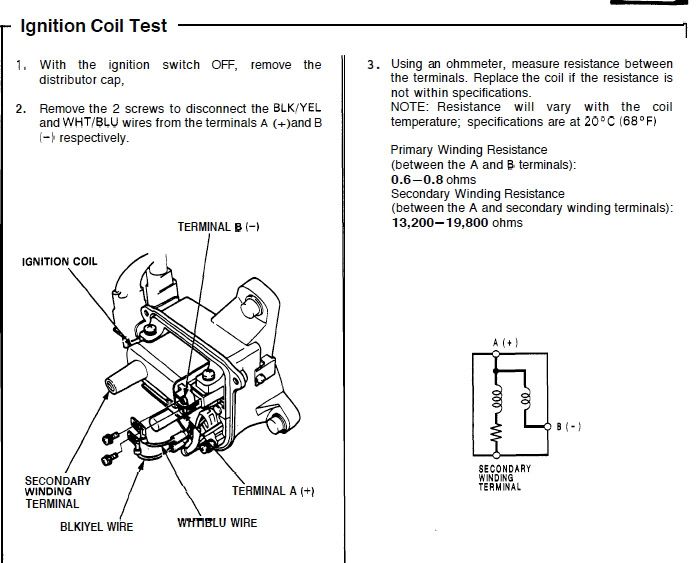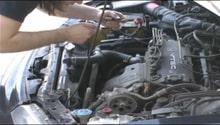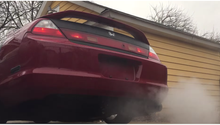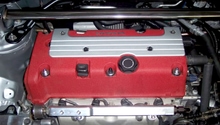Honda Civic: Why Are My Cylinders Misfiring?
Unlike most engine codes, a misfire has a long list of possibilities that can cause it. It can be anything from a fouled spark plug to an unruly blown head gasket. Truthfully, diagnosing a misfire requires an ECU reader, common sense, and lot of luck. This article explains how to diagnose and repair common misfire problems on your Honda Civic.
This article applies to the Honda Civic (1992-2000).
Your engine needs the perfect balance of fuel, spark, and air to run smoothly. When one or more of those ingredients decides to be excluded, the engine will struggle to run and, in some cases, result in a misfire. A misfire is defined by what it sounds like when an engine misses a fire or does not combust properly. There are many roots to a misfire, some of which are gateways that lead you to larger problems–others may only require a simple inexpensive repair. Whatever the case, a misfire can be severe enough to leave you stranded, or annoying enough to peg your car as the turtle in traffic. Listed here are three potential causes for a misfire, and the procedures taken to repair the problem.
Before checking for any of these problems be sure to plug in a code reader to the system. Although this is particularly helpful in cars of OBD2 systems, owners with older cars can still benefit from this procedure and at least have some tools to help troubleshoot their system.
Step 1 – Loss of spark
One of the most simple reasons a car misfires is because of a bad plug. However, a spark issue in itself requires repair, and that is rarely ever easy. Each plug and wire should be inspected. The distributor itself should also be opened and probed with the ignition coil, pick-up coil, and ignition next on the list. The following instructions explain how to check all mentioned components.
- When the engine is running, remove each plug. If the engine does not die with the plug pulled, congratulations you found your dead plug.
- To check for spark, remove each plug and ground them onto the engine, while they are connected to the plug wire. Have someone crank the ignition, and check for a blue ark. Do this for each spark plug, if the spark is yellow or non-existent change the plug.
- For the distributor, mark its position on the head and remove it. Check the cap for any cracks, verify the pick-up coil is a safe distance from the shaft, and check the ohm readings on the ignition coil. If all are within spec try changing the spark plugs first, and then proceed to move up to the wires as well as the distributor.

(Related Article: How to Troubleshoot Spark Issues - Honda-Tech.com)
Step 2 – Check the fuel/air ratio
Misfires due to problems with the fuel and air ratio are difficult to diagnose. A weak fuel pump could result in a lean mixture, but at the same time so can a vacuum leak. Fuel pump issues affect all the cylinders, while vacuum issues may only affect one. Perform a vacuum test to see if there are any leaks in the system.

Step 3 – Perform a compression test
No compression means the air/fuel ratio is non-existent in the engine. When an engine loses compression, the primary reason is a failed head gasket. Sometimes you can have a bad day and deal with a burned valve, which can lead to an engine rebuild. Perform a compression test across the block, and check each cylinder. If two or more adjacent cylinders lack compression, then it is most likely a blown head gasket, which will need to be promptly replaced. When the engine is cool, gently pull the red locking tab on the spark plug power plug-up to unlock the release.

Pro Tip
Head gasket replacement is a labor extensive procedure that requires precision work. Head bolts need to be installed and removed correctly. The mating surfaces needs to be leveled, and timing adjusted. If you plan on completing it, purchase a repair manual.
(Related Article: How to Replace Blown Head Gasket - Honda-Tech.com)
Related Discussions, and Site
- OBD1 Distributors, and No Spark - Honda-Tech.com
- Cylinder Four Misfires - Honda-Tech.com
- D16 Misfires - Honda-Tech.com
- Diagnosing Misfires - AutoTap.com






